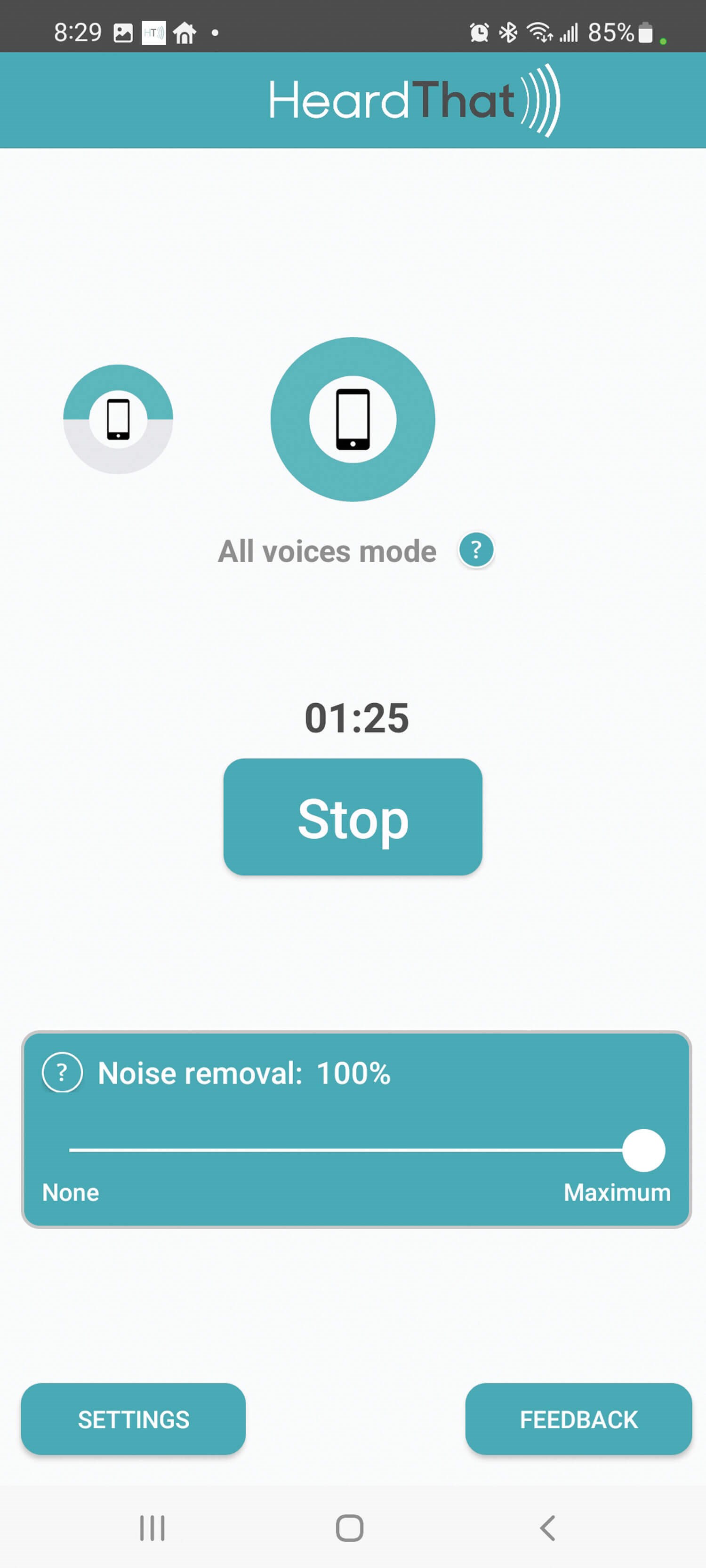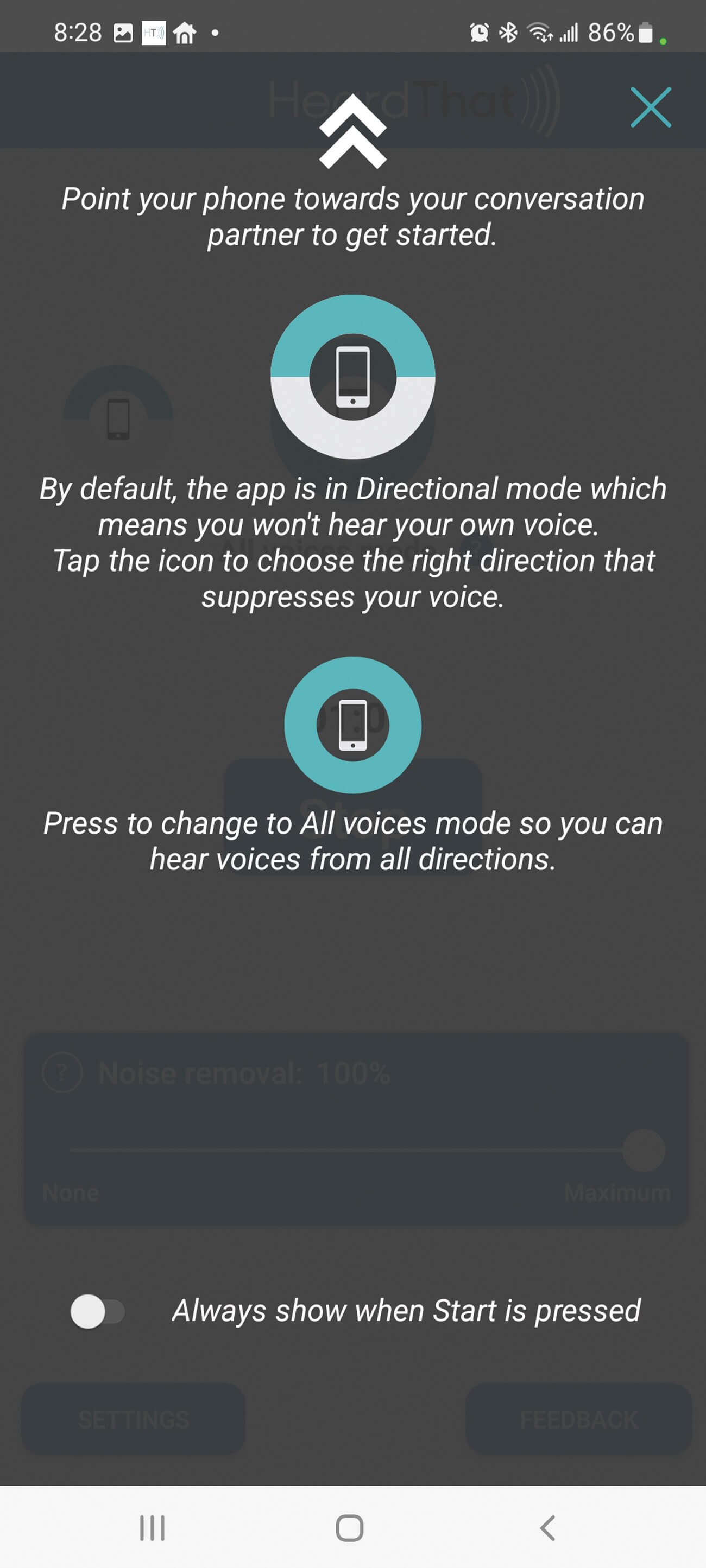Ever find yourself in a noisy restaurant, barely following conversation yet nodding in clueless agreement? Considering how loud social settings can be, this is likely a familiar scenario. As gatherings become a regular part of our lives again, so do the challenges of hearing in these busy environments. Whether it’s ambient music or that loud table around the corner, Heard That is an app hoping to help with just that.
Heard That is being developed by Singular Hearing, a subsidiary of Singular Software, and is available for download on any smartphone device. With it, your mobile phone can function as an ‘assistive listening device’; a tool or accessory that supplements an amplification device, like a hearing aid, to maximise speech understanding in especially challenging environments. This technology has long been used in the hearing aid industry through use of remote mics or FM devices, but the idea of only requiring your mobile phone is very appealing for convenience and accessibility.


To use the app you need any wearable audio device, like headphones or hearing aids, paired or wired to your phone. Once connected, you simply press ‘start’ and point the built-in microphone of your phone towards your conversation partner.
The mic will pick up the target conversation, and the app ‘cleans’ the signal of any obtrusive background noise using sophisticated speech enhancing programming. This noise-filtered signal is then streamed directly to your wearable devices.
The app has two microphone settings: ‘Directional’ which is ideal for one-on-one conversations, and the ‘All Voices Mode’ which is omnidirectional and ideal for group settings. Noise filter strength can be adjusted according to preference. It is currently available for free, but the developers expect to eventually charge a subscription fee estimated to be around $10/month to $100/year.
"The mic will pick up the target conversation, and the app ‘cleans’ the signal of any obtrusive background noise using sophisticated speech enhancing programming"
App setup proved difficult for me. Despite having an up-to-date Android phone, I was never successful in getting the app to function. After attempting with different wearable devices, I eventually had to enlist the help of a few willing friends and their iPhones. Once working, I found the sound quality mediocre. And while sound quality is only supplemental to the app’s main focus of improving signal-to-noise ratio, I do think it may discourage potential users if it is sub-par.
I also found my own voice intolerably loud which I couldn’t resolve no matter how the phone was oriented. ‘All Voices’ mode helped slightly, but made more distant speech audible and distracting when it otherwise would not be.
My biggest concern, however, was the significant lag. The streaming signal was about a full second behind true audio input which actually made conversation more difficult to follow. Troubleshooting tips are provided, but many rely on external fixes that can be costly, such as investing in a newer phone, noisse-canelling headphones, or iPhone-specific wearable devices.
Despite my efforts, using the app only seemed to degrade communication. While the app offers a very useful service, built-in phone options, such as iPhone's Live Listen, may be the best place to start as they're free, don't require any download and work sufficiently well. But while the app is free, I suggest giving it a try. There is a built-in feedback feature, so the app may see improvement.
"The app has two microphone settings: ‘Directional’ which is ideal for one-on-one conversations, and the ‘All Voices Mode’ which is omnidirectional and ideal for group settings"
If you find yourself having significant communication concerns, I’d suggest seeing a hearing health professional to assess your hearing and to discuss management options prior to relying on an app. While apps can do well to supplement management of hearing concerns, it’s critical to ensure you are not missing out on more effective, primary management tools, such as well-programmed hearing aids.
Hopefully we continue to see apps, just like Heard That, improve and expand. Acknowledging and managing hearing concerns is still largely stigmatised, so anything that normalises addressing communication difficulty is a win for me.





